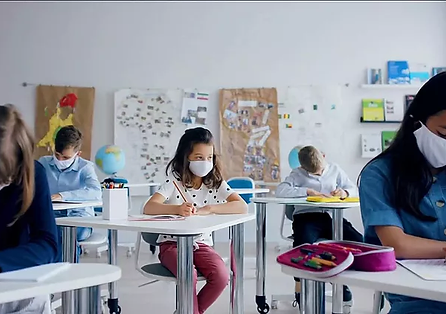COVID-19 Normalization Results
The times we are going through are anything but normal. Many people lost their loved ones, their health, their jobs, their freedom, and their overall well-being to the COVID-19. Everyone has a common wish to return to normalcy. In some successful -or as some may suggest lucky- countries, the normalization process is undergoing. Despite being welcomed by most people, the normalization process carries a huge risk of causing a second wave.
Many countries, especially Eurasian countries, have passed the peak period of their first waves of COVID-19. Already having suffered greatly from the pandemic socio-economically, these countries are eager to normalize as soon as possible. Many countries already lessened their precautions such as internal and external travel restrictions, curfews, and lockdowns. Although people wish to return to their pre-pandemic lives both in economic and social means, governments tend to relieve only the economic activities rather than social and educational facilities.
The results of the normalization are unique to every country, and for many, they are still uncertain. In some countries such as Iran, Israel, and South Korea, signals of an imminent second wave are too obvious to ignore. South Korea has officially announced the second wave and started to bring back restrictions to social gatherings. In upcoming weeks, experts expect to see a rise in daily cases in some other normalizing countries as well.
The University of Oxford has established a government response tracker “Oxford COVID-19 Government Response Tracker (OxCGRT)” to collect publicly available information on government responses to the pandemic. The system has 17 indicators to determine the countries’ actions for fighting the disease. Eight of the indicators record information regarding virus containment policies, such as school closures and restrictions in movement. Four of the indicators record economic policies, such as income support to citizens or migrants. Five of the indicators record health systems policies such as virus testing policies or emergency healthcare investments.
The data from the 17 indicators are calculated by the algorithm, which assigns a point between 1 and 100 that reflects the level of government actions of each country. (1) Using this data, we can categorize countries in 4 classes.
Relaxed and rising:
A country is regarded to be relaxed if its stringency index score is below 70. One such country is Iran, which was one of the first countries to experience a full-scaled epidemic, even before Europe or the USA. In May, Iran loosened its lockdown measures. However, the call for relief proved to be premature as the country is currently struggling with a second peak in the number of cases. Although officials suggest that the second rise could be lessened by increasing the test numbers, the proportion of tests returning positive has also increased, indicating that the virus is once again spreading among Iranians. (2)
Italy and Spain, which have collectively recorded nearly half a million cases and over 60,000 deaths, have both recorded the weekly number of new cases a quarter less than they did the week before. For the time being, the worst seems to be over for these countries. However, with lessened precautions and decaying public awareness, these countries are perfectly vulnerable for a second wave of the virus. (2)
Cautious as cases rise:
7 of the 45 countries to record over 25,000 coronavirus cases are still under lockdowns - with astringency score of between 70 and 80 - while cases continue to rise. This group mainly consists of American countries that experienced the first wave much later than the Old World.
Brazil, which has recorded the second-highest number coronavirus cases ever, is the undoubted core of pandemic in South America, followed by Peru and Chile. Brazil has a unique position against the pandemic since its president Bolsonaro rejects to take solid action against the disease. It is mainly thanks to the Brazilian state governors’ lockdown and disease control policies that the country’s health system still works, and its stringency index score is still relatively high. However, state governors recently relaxed local lockdowns to prioritize the country’s fragile economy, which led to the weekly number of cases to rise by 17.5% week-on-week.(2)
Cautious as cases fall:
Five countries still have a high level of stringency but are seeing the policy paying off with weekly new cases falling: Afghanistan, Ireland, the UK, Russia, and Mexico.
The UK’s stringency score is currently 73, decaying only 3 points since the beginning of May, with measures such as the quarantine for international arrivals balancing out social distancing relaxations in early June. With decreasing amounts of new cases, the relaxation has not yet caused any signs of a second wave in the UK.(2)
As a conclusion, in nearly all countries that are normalizing, the results are not clear enough to be seen without processing the data. The experts who do process the data are aware of the risks of over-normalization which may bring a second wave of disease. However, as the people get used to the normalcy, they abandon their protective measures and even this fact makes a second wave more likely to occur, as it did in Korea. Perhaps the governments need to balance their economic worries with the risk of a new wave, by continuing to keep their people alerted and taking the normalization process slower.





